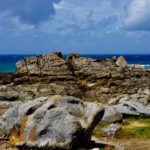Table of Contents
Ever seen pink cliffs? Not just any pink, but huge walls of rose-colored granite towering 230 feet above the ocean at a Brittany cliffside?
You’ll find them in Brittany and they’re so stunning that people often do a double-take when they first see them.
These aren’t your usual gray cliffs, they stretch for miles along France’s northwestern coast. The best part? Wait until you see what happens when the sun hits them.
The Pink Granite Coast
The Côte de Granit Rose (Pink Granite Coast) stands out even among Brittany’s famous coastlines.
The rocks here aren’t just any rocks but massive chunks of pink granite. Nature spent 300 million years crafting them into shapes so odd, you’ll wonder if you’re still on Earth.
Most tourists rush to the French Riviera or Paris, missing out on this natural masterpiece.
The cliffs around Ploumanac’h village have the best views, where the pink granite formations create a landscape you won’t see anywhere else in Europe.
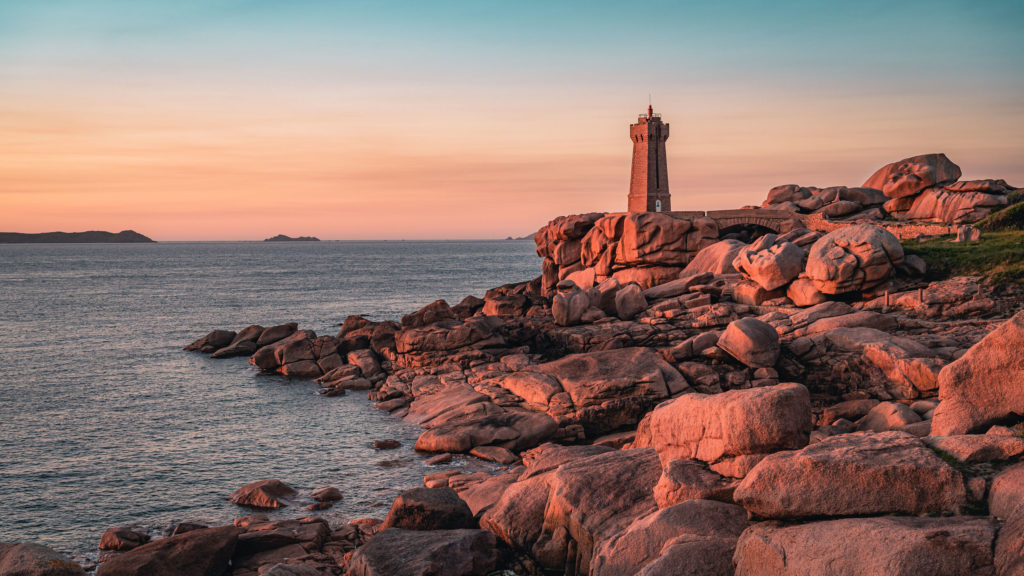
Why These Cliffs Break All the Rules
The magic happens when sunlight hits these cliffs. The pink granite lights up like it’s glowing from within, creating a show that changes by the hour.
Morning light turns them rose gold, while sunset makes them burn orange and red. But what really sets these cliffs apart is how they seem to defy gravity.
Huge boulders balance on tiny contact points, creating natural arches and bridges that look like they should collapse any second.
Fun fact? They’ve been standing strong for millions of years.
When to Visit the Pink Granite Coast
The best time to visit depends on what you’re looking for.
Summer (July and August) brings the warmest weather and clearest skies.
It’s perfect for walks along the coastal path and swimming at nearby beaches. But this is also when you’ll find the most tourists.
If you prefer fewer crowds, try May, June, or September. The weather is still mild, and you’ll have more space to explore. Hotels and restaurants are open but not packed.
Spring and fall can be rainy, but the changing light on the pink rocks creates beautiful photo opportunities.
Winter visits have their own charm. While it can be cold and wet, the dramatic skies and quieter paths give you a different view of the coast.
Just remember to check the weather forecast and bring waterproof gear.
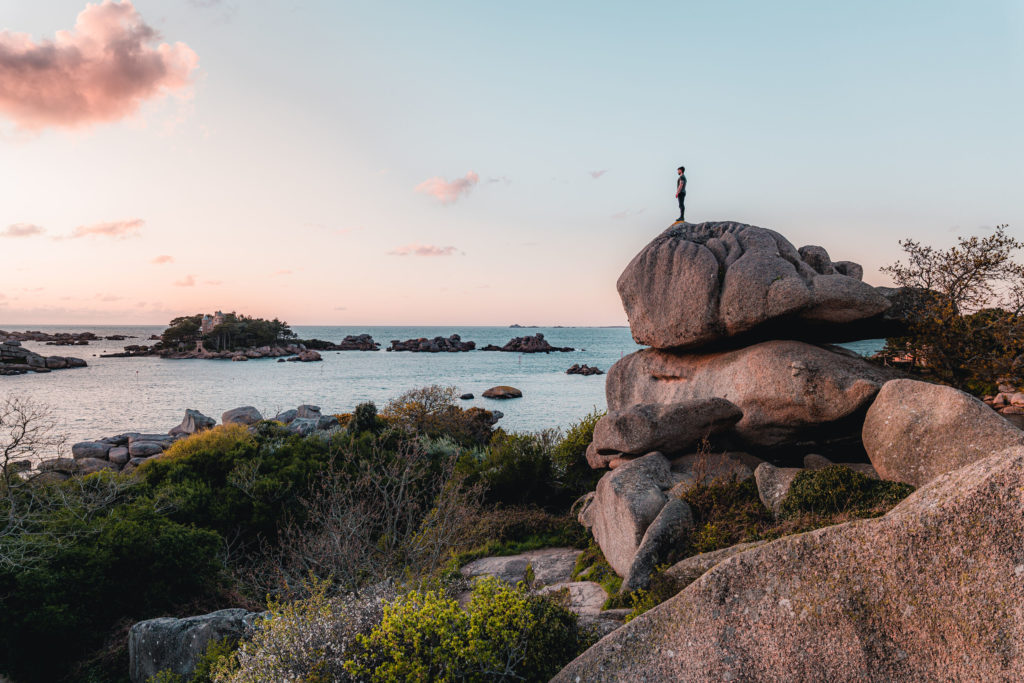
Getting there Without Tourist Traps
Skip the expensive tours. Take the train from Paris to Lannion, then catch the local bus to Ploumanac’h.
It’s cheaper and you’ll see parts of France most visitors never do. The bus winds through small villages where people still live like they did fifty years ago.
Once you’re there, forget about following the usual tourist route. Start at the lighthouse and walk away from the main viewing points.
After about twenty minutes, you’ll find spots where the cliffs are even more spectacular, and you’ll have them all to yourself.
Why Photographers Love this Cliffside
Want to know why photographers love these cliffs? It’s all about the colors. These aren’t just plain pink rocks and here are a few reasons photographers love this location.
1. Early morning is prime photo time. The soft light makes the pink granite glow, and you’ll often catch the morning fog rolling in from the sea.
2. You don’t need fancy gear. The rocks are so colorful and the scenery so striking that even phone cameras can grab great shots.
3. The best spots for photos are along the coastal path between Ploumanac’h and Perros-Guirec. You’ll find the largest concentration of pink granite formations here.
4. Different times of day show different colors in the rocks. Morning light brings out the pinks, while sunset highlights orange tones.
5. The rocks create natural frames for ocean views, giving you ready-made photo compositions wherever you look.
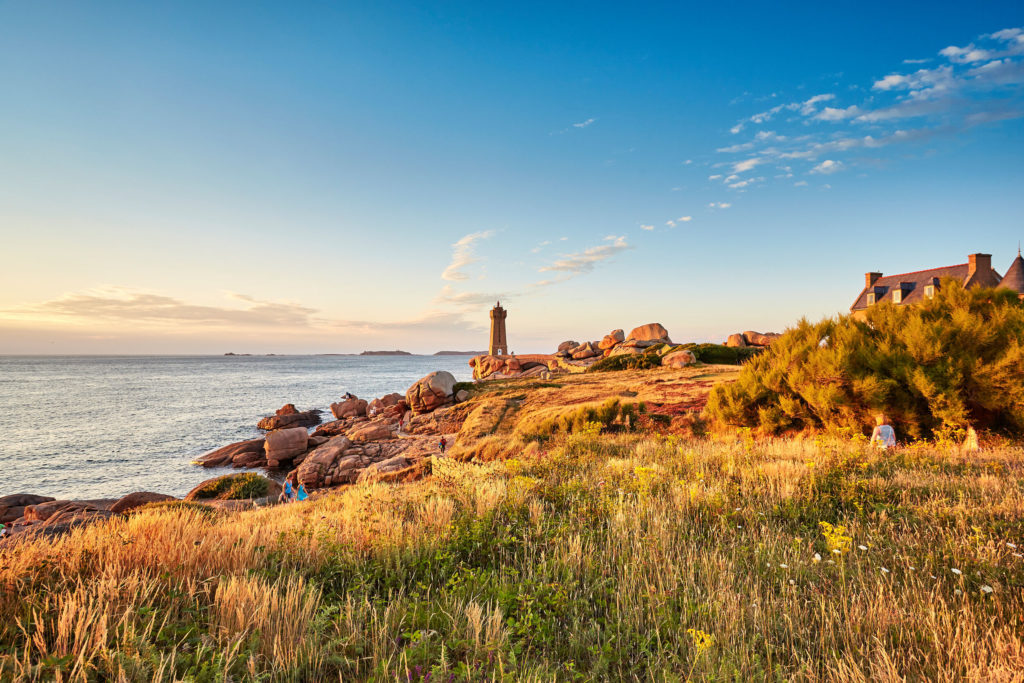
Local Secrets that Make it Special
The fishing village of Ploumanac’h is right at the heart of the Pink Granite Coast. The locals have lived alongside these cliffs for generations and here are some things that make this place special.
1. The rocks have traditional Breton names, passed down through generations.
2. Many of these names describe what the formations look like, making them useful landmarks for both locals and visitors.
3. Local fishermen have historically used the more distinctive rock formations as navigation markers.
This helps them return to shore safely, a practice that some continue today.
4. The village of Ploumanac’h itself was once a small fishing port, and you can still see the old harbor where boats would shelter between the granite rocks.
5. The coastal footpath, now part of the famous GR34 trail, was created by customs officers in the 19th century to catch smugglers.
6. Local guides can point out the different mineral compositions in the granite.
This is what creates the distinctive pink color, including large pink feldspars, grey quartz, and black mica.
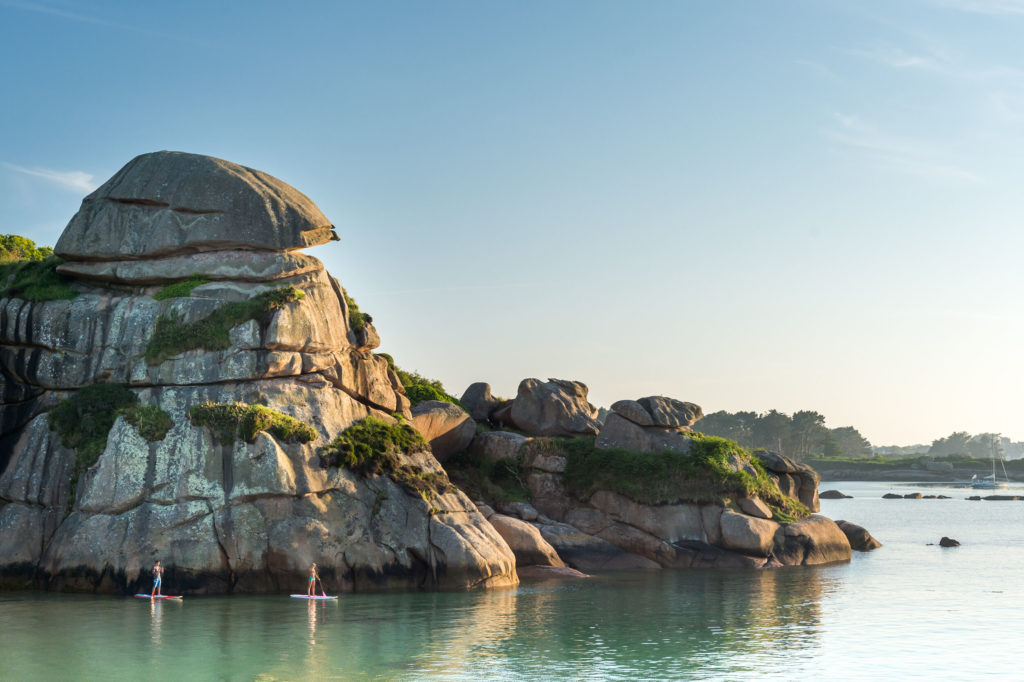
The Coastal Path that Changes Everything
The GR34 hiking trail runs right along these cliffs. Each turn reveals a new view that seems impossible.
The path itself is part of the experience. It goes past huge rocks and sometimes gets very narrow as you walk between big boulders.
Walking this path feels like being on another planet. The rock formations create natural windows that frame perfect views of the sea.
Some spots along the trail have benches carved right into the granite, perfect for sitting and watching waves crash below.
Why it’s More than Just Pretty Rocks
The Pink Granite Coast isn’t just another pretty place. It’s a reminder that Earth can create things that are more amazing than anything we could design.
These cliffs have watched over the Atlantic for millions of years, and they’re still surprising people today.
These cliffs are part of a bigger story. They show how Earth looked millions of years ago when this whole area was buried under mountains taller than the Himalayas.
What we see today is what’s left after ice ages, storms, and time wore those mountains away.
The pink granite tells geologists about ancient volcanoes and massive earthquakes that shaped this coast.
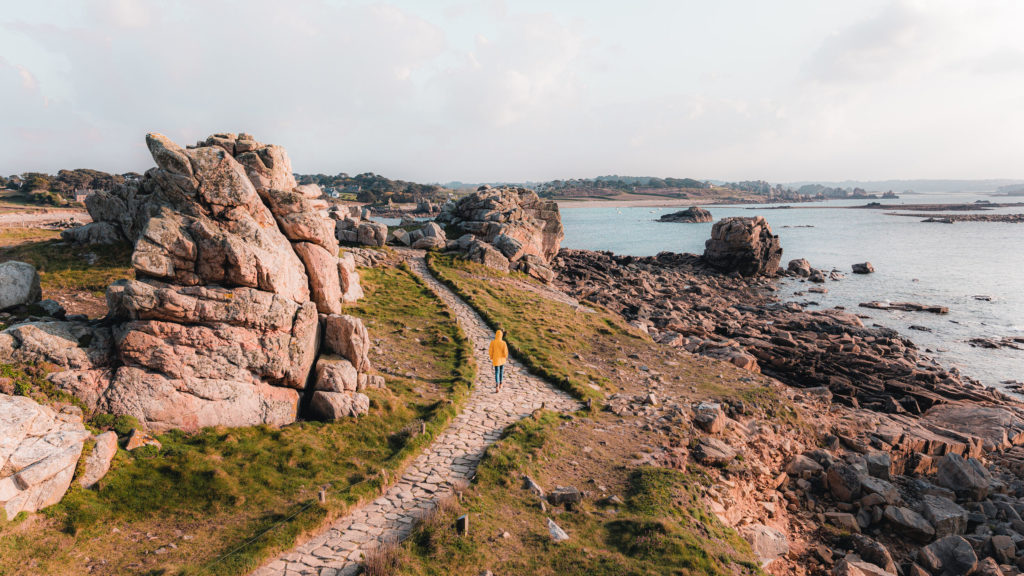
Every crack and crystal in these rocks is like a page in Earth’s diary, telling stories about our planet’s wild past.
A Natural Wonder
If you want to see something that looks like it belongs in a National Geographic magazine but is just a train ride from Paris, it’s the Pink Granite Coast.
Pictures don’t do justice to how special this place is. You have to stand there yourself, feeling small next to those giant pink rocks.
That’s the only way to understand why people come from all over the world to see it.

I’ve always been captivated by Brittany’s unique charm, and I started this site to share my favourite spots and tips with fellow travellers. From exploring hidden beaches to experiencing local culture, I aim to provide practical advice and fresh perspectives on everything this destination has to offer.

